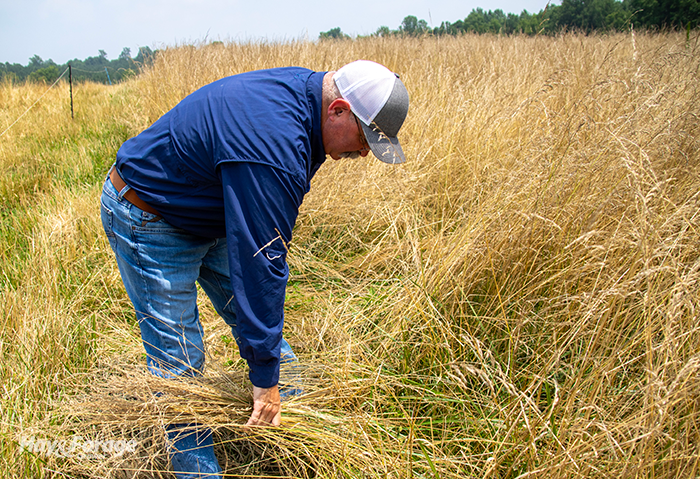
Stockpiling forage is a practical strategy farmers can use to extend their grazing season. The accumulation of late summer growth can provide livestock with high-quality forage into the fall and throughout the winter, which can significantly reduce hay feeding and its associated costs.
With that said, forage quality and availability will depend on mid-season management, and now is the time to start prepping stands for stockpiling. Forage utilization will vary from actively growing pastures, so a different approach to grazing stockpiles will be warranted.
There are many forage species that are suitable for stockpiling, but tall fescue reigns supreme in regions of the U.S. where grazing livestock is popular practice. In a recent Novel Notes newsletter from the Alliance for Grassland Renewal, Will McClain with Missouri State University explains that tall fescue’s cool-season growth pattern, its durability, and its ability to maintain forage quality after frost are what make it such a good contender for stockpiling.
“When properly managed, stockpiled tall fescue can provide a substantial amount of high-quality forage for winter grazing,” McClain states. “This practice not only lowers feed costs, but also promotes better nutrient cycling, reduces labor associated with hay feeding, and supports animal health by allowing more consistent access to forage.”
A robust fall stockpile starts with proactive summer forage management, and McClain recommends farmers start preparing now. This includes assessing pasture condition, planning nitrogen applications, and mapping out a grazing or mowing schedule for the rest of the season to optimize fall growth and winter grazing. He offers the following tips.
• Reset the pasture by grazing or mowing grass to a height of 3 to 4 inches by mid-August.
• Apply 35 to 50 pounds of nitrogen per acre. Consider cost, expected rainfall, and soil conditions to choose the best nitrogen source.
• After fertilizing the stand, defer grazing in the pasture until after the first hard freeze.
• Plan to allocate approximately 1 acre per cow for the winter grazing period; however, this will depend on forage yield, animal size, and supplementation strategy.
• Implement strip grazing to enhance stockpile utilization, providing cattle access to no more than two to three days’ worth of forage at a time.
In addition to improving forage utilization, McClain notes strip grazing reduces trampling losses and encourages more uniform grazing throughout the stand. He also suggests that using a back fence usually isn’t necessary in the winter due to minimal regrowth. Therefore, only a single water source is needed.
“With proper planning and implementation, stockpiling tall fescue can be a highly efficient component of your winter feeding program,” McClain concludes.

